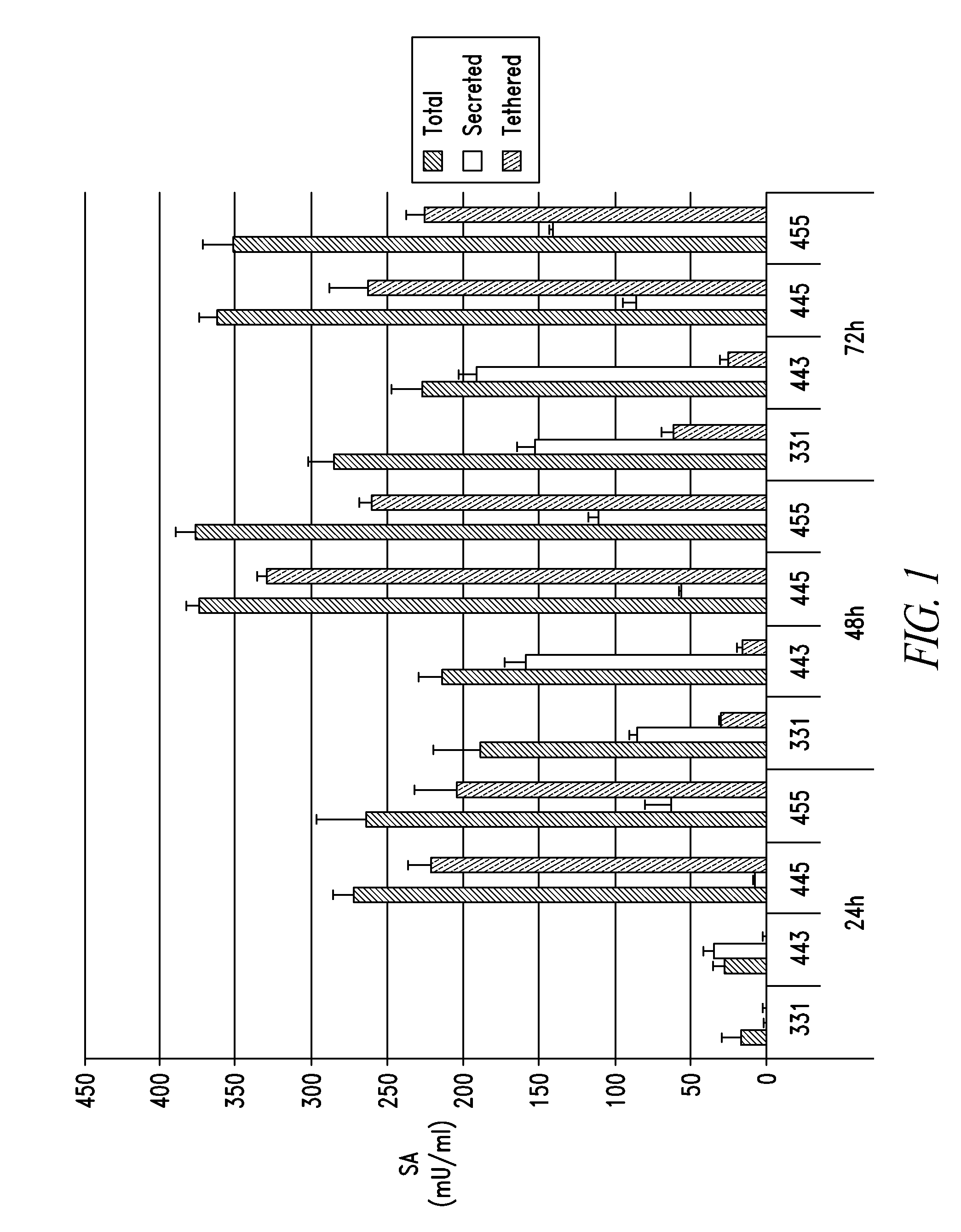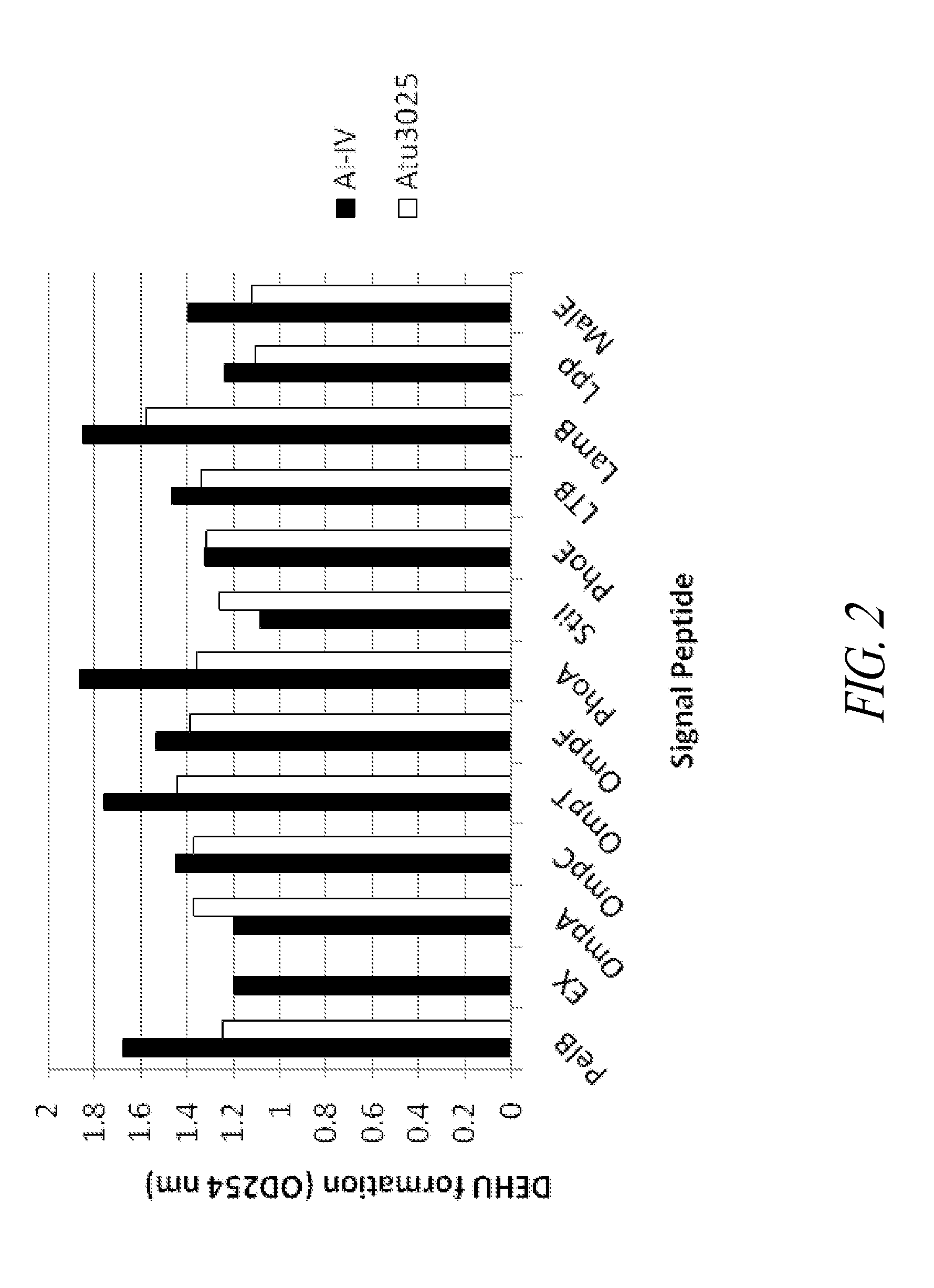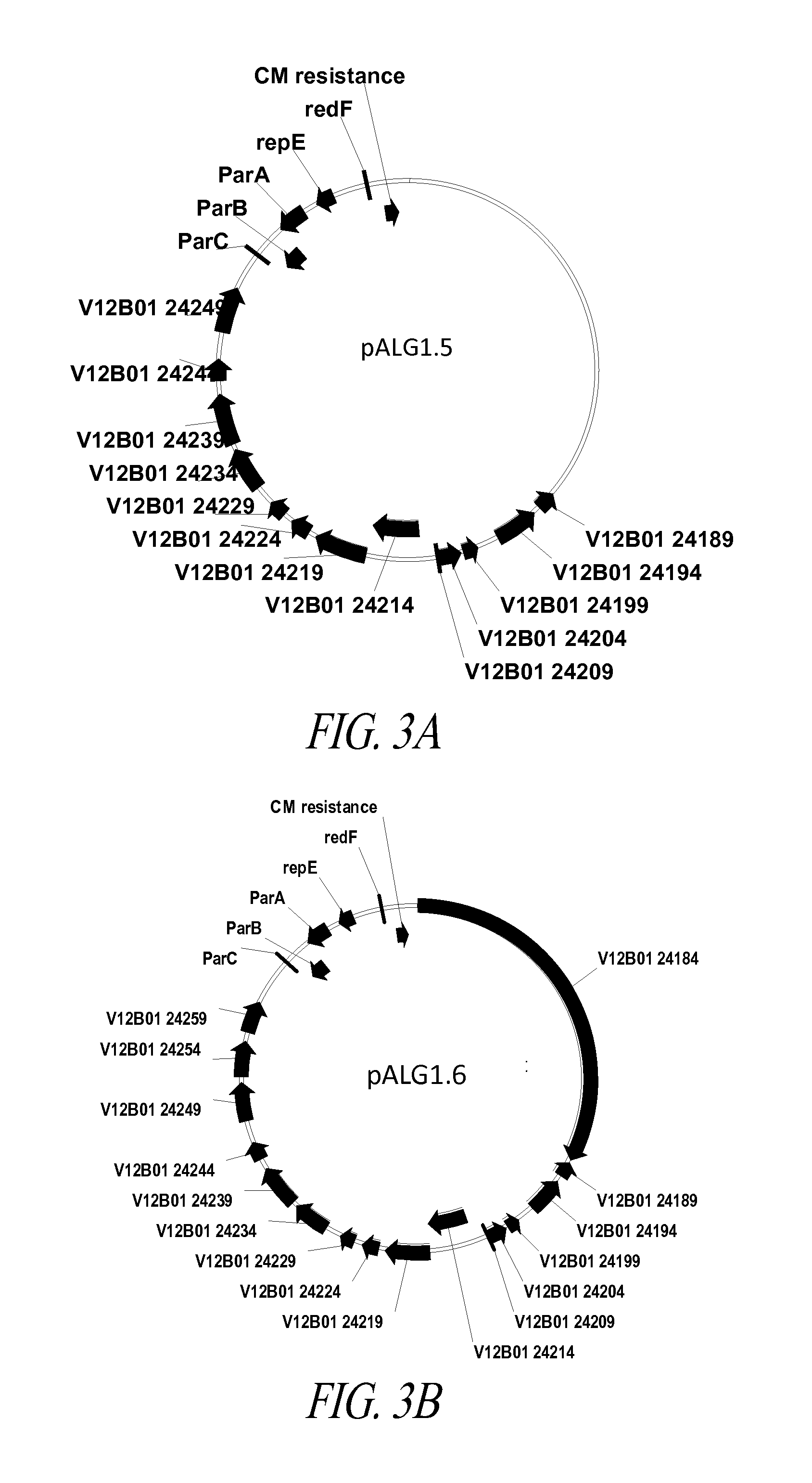Microbial systems for producing commodity chemicals
a technology of commodity chemicals and microorganisms, applied in the direction of lysine, enzymology, biofuels, etc., can solve the problems of increasing the use of pesticides and fertilizers, reducing the yield of ethanol, and difficult degradation of lignocellulolic biomass using most biological systems, so as to enhance the production or yield of ethanol
- Summary
- Abstract
- Description
- Claims
- Application Information
AI Technical Summary
Benefits of technology
Problems solved by technology
Method used
Image
Examples
example 1
Surface Display and Autotransporter Proteins for Secretion and Tethering of Polysaccharide De-Polymerizing Enzymes
[0276]To improve the secretion of polysaccharide de-polymerizing enzymes, and thereby improve the metabolism of polysaccharides, various alginate lyases (AL) were fused to carrier proteins, expressed in E. coli, and incubated with alginate. Upon expression, as summarized below, the catalytic activity of the AL fusion polypeptides was associated with the conditioned media (i.e., fully secreted), the outer membrane (i.e., secreted and tethered) of the cells, or both; and the various AL-carrier combinations showed different ratios of fully secreted AL activity vs. tethered AL activity. Nonetheless, both the fully secreted and tethered ALs effectively de-polymerized alginate without the need to break open the cells.
[0277]Bacterial cells E. coli K12 (DH5α and DH10B) and E. coli W were transformed with vector DNA carrying various combinations of the following genetic and prote...
example 2
Improved Growth of E. coli on Degraded Alginate
[0307]To improve the ability of recombinant E. coli to metabolize and grow on alginate as a sole source of carbon, the pALG1.5 vector was modified by incorporating additional genetic components, mainly those involved in the extracellular degradation and transport of alginate and its by-products. The pALG1.5 vector contains the genomic region between V12B01—24189 and V12B01—24249 of Vibrio splendidus, and confers on E. coli the ability to grow on alginate as a sole source of carbon (see, e.g., U.S. Application No. 2009 / 0139134, herein incorporated by reference, which describes the construction of pALG1.5). A diagram of the pALG1.5 vector is shown in FIG. 3A. A diagram of each of the following vectors is shown in FIGS. 3B-3U.
[0308]Construction of pALG 1.6. To improve alginate degradation, a vector containing V12B01—24254 (alginate lyase) and V12B01—24259 (alginate lyase) was constructed based on pKm2 plasmid backbone (R6Kγ-based vector co...
example 3
Modifying Escherichia Coli to Grow on Cellobiose and Carboxy Methyl Cellulose as a Sole Source of Carbon and Energy
[0328]To create E. coli strains that grow on cellobiose and carboxy methyl cellulose as a sole source of carbon and energy, various cellulase genes were first obtained from Saccharophagus degradans 2-40 and cloned into sub-vectors. Specifically, a variety of cellulases, cellobiohydrolases, cellodextrinases and β-glucosidases, summarized in Table 3 below, were sub-cloned into five different vector systems, pING1-Bgls, pING2-Cell, pING1-Cel2, pING2-Cel3, and pING1-Cel4. The cloning of each of these vectors is summarized below. Escherichia coli strain EC100 or DH5α was used for vector construction.
TABLE 12Cellulases sub-cloned into vectors.PlasmidnameS. degradans genes incorporated in each plasmidpING1BglsBgl1A (Sde_3603), Bgl1B (Sde_1394),Bgl3C (Sde_2674)pING2Cel1Cel5B (Sde_2490), Cel5J (Sde_2494),Ced3A (Sde_2497)pING1Cel2Cel5C (Sde_0325), Ced3B (Sde_0245),Cel9B (Sde_0649...
PUM
| Property | Measurement | Unit |
|---|---|---|
| pH | aaaaa | aaaaa |
| temperature | aaaaa | aaaaa |
| temperature | aaaaa | aaaaa |
Abstract
Description
Claims
Application Information
 Login to View More
Login to View More - R&D
- Intellectual Property
- Life Sciences
- Materials
- Tech Scout
- Unparalleled Data Quality
- Higher Quality Content
- 60% Fewer Hallucinations
Browse by: Latest US Patents, China's latest patents, Technical Efficacy Thesaurus, Application Domain, Technology Topic, Popular Technical Reports.
© 2025 PatSnap. All rights reserved.Legal|Privacy policy|Modern Slavery Act Transparency Statement|Sitemap|About US| Contact US: help@patsnap.com



